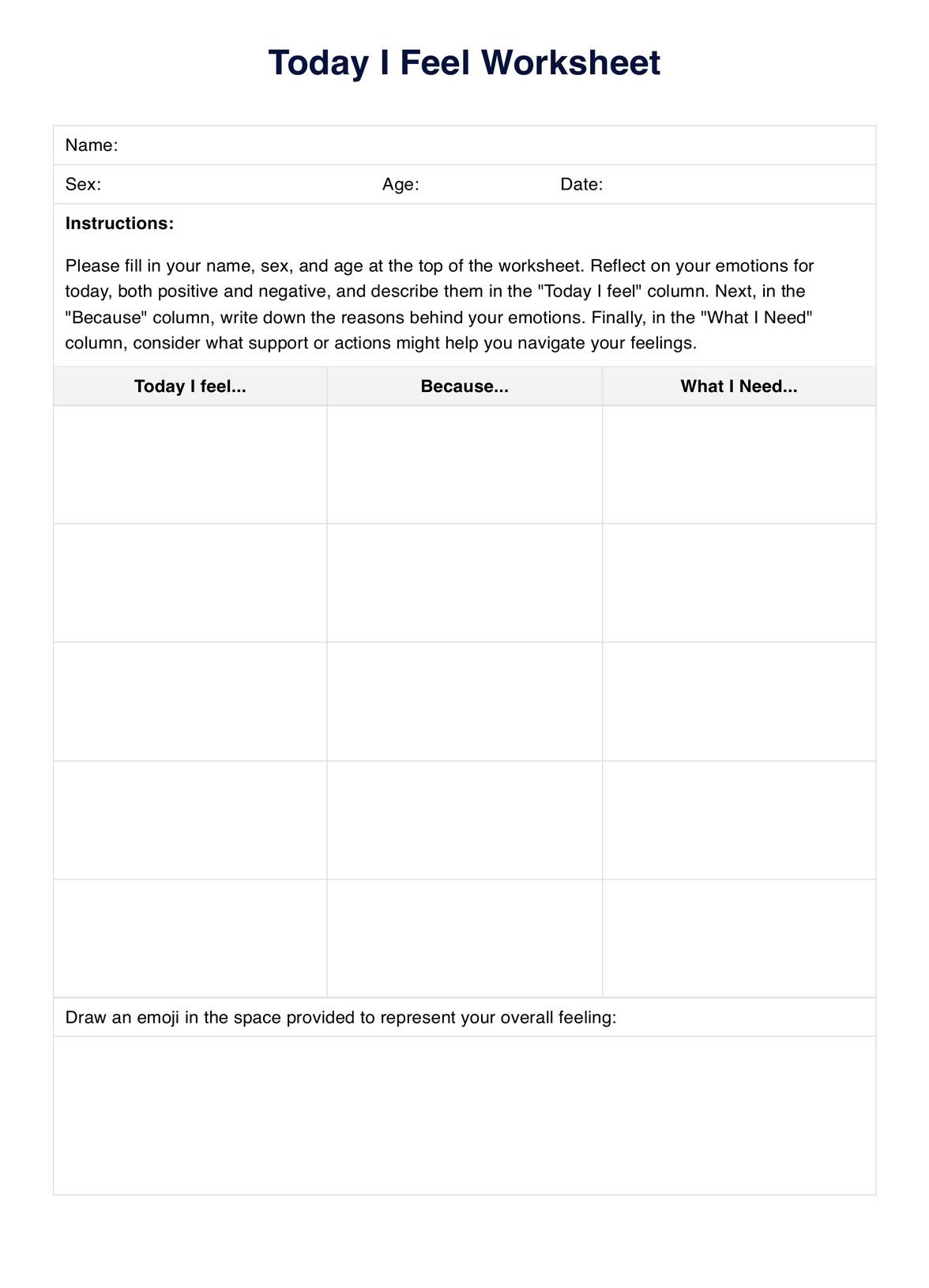Emotional regulation is vital for managing stress, fostering healthy relationships, and achieving well-being.

Today I Feel Worksheet
Boost self-awareness in a fun way with the Today I Feel Worksheet. Download for free and explore the benefits.
Use Template
Today I Feel Worksheet Template
Commonly asked questions
Seeking help for emotional regulation is essential when difficulties in managing emotions start impacting daily functioning, relationships, or mental health.
The time to complete the worksheet varies depending on individual reflection and engagement, typically ranging from a few minutes to half an hour.
EHR and practice management software
Get started for free
*No credit card required
Free
$0/usd
Unlimited clients
Telehealth
1GB of storage
Client portal text
Automated billing and online payments











